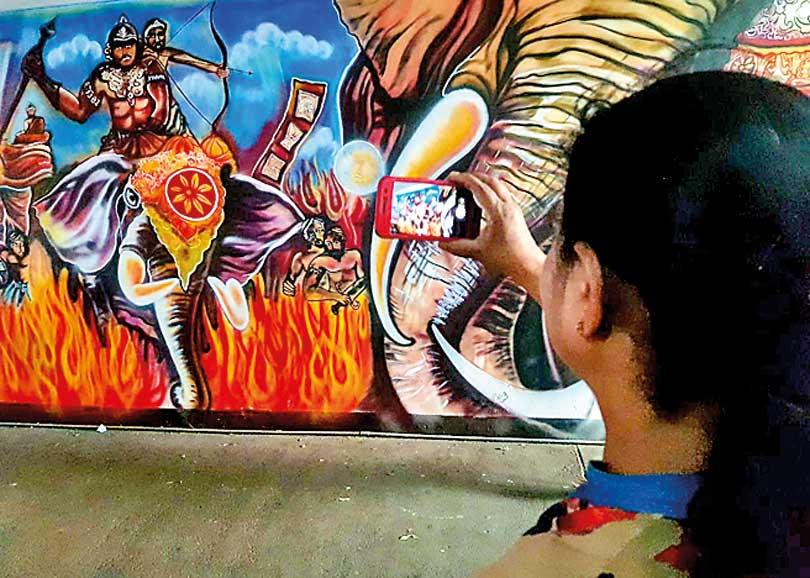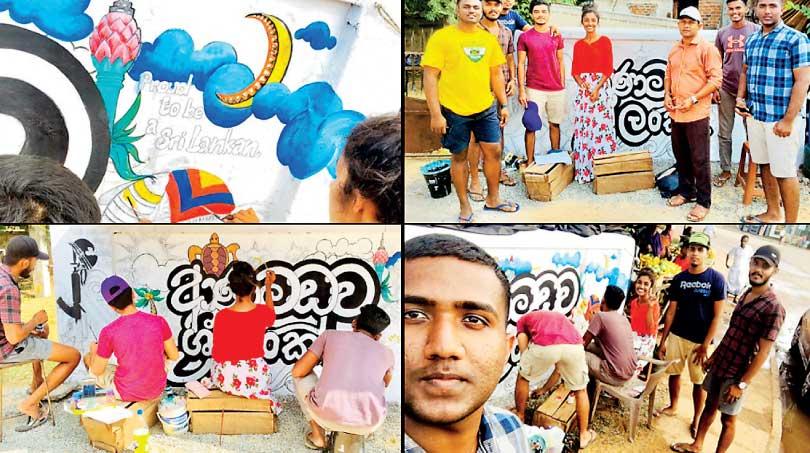Reply To:
Name - Reply Comment

 In a new documentary on her life, Imelda Marcos, the lady with the thousand pairs of shoes comes up with a gem. She is quite deadpan when she says “perception is real, truth is not.” This is not wisdom, this is worldly experience that is talking here.
In a new documentary on her life, Imelda Marcos, the lady with the thousand pairs of shoes comes up with a gem. She is quite deadpan when she says “perception is real, truth is not.” This is not wisdom, this is worldly experience that is talking here.
Perception is everything now, if not for optics, there is no value now. Where do optics come now? The most effective is online.
Last week, I spoke with a friend who had spoken with youth engaged in drawing street art. Some of the organising was taking place on the most obvious of places, WhatsApp and Facebook Messenger. They may not have been prime-movers in this trend, but like with many other waves, they greased it and made it viral.
The painting process itself has been a ‘made for social media’ event. The images have been going around; there are online groups and even self-appointed advisers. Without social media, this event would have taken a completely different character.
Uncharacteristically, the street art trend did not gain its own hashtag on Twitter. It might still get one; several social media users have made public appeals for such a trend. On Facebook, there is already one: #Wall_Art_In_Sri_Lanka
In the same tone, a movement to send 100 members to the next Parliament has begun on social media. It is tapping into the very conspicuous online sentiment that there should be radical change in Parliament.
All this is pointing towards one direction; we are living in the age of viral optics. Democracy or the lack of it now survives on the end of a selfie stick. Journalism is trying to acclimatise to this new reality as is everyone else.
Democracy or the lack of it now survives on the end of a selfie stick. Journalism is trying to acclimatise to this new reality as is everyone else
We still don’t have data to substantiate this fully, but the gut feeling is that social media play a vital role in this society. There are self-appointed experts by the dozen on this – in reality, I know of only one authentic such personality in Sri Lanka and working on Sri Lanka – all others are charlatans. We really don’t know how influential this trend is, what we know or feel is that it matters now. And will be quite important.

Social media real-estate is sought after property. But the other side of all this, that we are yet to deal with, is what do we do when the sinister of all this reveal their fangs. I am not only talking about fakes and disinformation. I have written so much on how Sri Lanka is woefully unprepared to deal with these threats. But no one seems to care.
We are nowhere close to looking at digital trauma threats, abuse and trolling that do take place.
I recently spoke with several Sri Lanka based journalists on these threats – none of them even realised these were real threats with real life impacts. The only recourse they knew was to shut out the attackers. We know such an approach never makes the attacks any less, but emboldens those who are behind them.
But such conversations are not for now. It is time to get hooked; to get hooked on to #Wall_Art_In_Sri_Lanka and the next trend and the next. Perception is real, truth is a choice we are free to make.
The writer is currently pursuing a Masters by Research at CQUniversity, Melbourne on online journalism and trauma Twitter - @amanthap